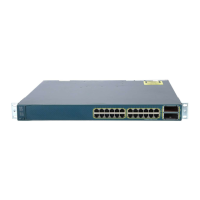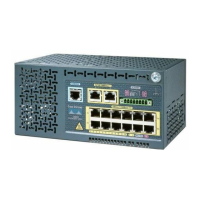CHAPTER
32-1
Catalyst 3750 Switch Software Configuration Guide
78-16180-02
32
Configuring QoS
This chapter describes how to configure quality of service (QoS) by using automatic QoS (auto-QoS)
commands or by using standard QoS commands on the Catalyst 3750 switch. With QoS, you can provide
preferential treatment to certain traffic at the expense of others. Without QoS, the switch offers
best-effort service to each packet, regardless of the packet contents or size. It sends the packets without
any assurance of reliability, delay bounds, or throughput. Unless otherwise noted, the term switch refers
to a standalone switch and a switch stack.
Note For complete syntax and usage information for the commands used in this chapter, refer to the command
reference this release.
This chapter consists of these sections:
• Understanding QoS, page 32-1
• Configuring Auto-QoS, page 32-18
• Displaying Auto-QoS Information, page 32-28
• Configuring Standard QoS, page 32-28
• Displaying Standard QoS Information, page 32-67
The switch supports some of the modular QoS CLI (MQC) commands. For more information about the
MQC commands, refer to the “Modular Quality of Service Command Line Interface Overview” at this
URL:
http://www.cisco.com/univercd/cc/td/doc/product/software/ios122/122cgcr/fqos_c/fqcprt8/
qcfmdcli.htm#89799
Understanding QoS
Typically, networks operate on a best-effort delivery basis, which means that all traffic has equal priority
and an equal chance of being delivered in a timely manner. When congestion occurs, all traffic has an
equal chance of being dropped.
When you configure the QoS feature, you can select specific network traffic, prioritize it according to
its relative importance, and use congestion-management and congestion-avoidance techniques to
provide preferential treatment. Implementing QoS in your network makes network performance more
predictable and bandwidth utilization more effective.
